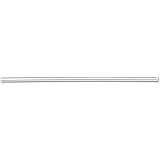The world of homemade electronics and DIY gadgets offers endless possibilities for creators, hobbyists, and anyone looking to understand how their tech works. As the accompanying video brilliantly showcases, you can build a wide array of intriguing DIY WiFi gadgets and inventions right in your own home, often with surprisingly affordable components. This article dives deeper into some of the innovative projects and fundamental concepts demonstrated, providing additional context, insights, and practical advice for your next custom build.
Unlocking Wireless LED Innovations with Homemade Wireless Projects
One of the most captivating demonstrations in the video is the creation of a wireless LED light, even without the need for traditional soldering. This project taps into the fascinating principles of electromagnetic induction, which allows energy to be transferred wirelessly between coils. Imagine if you could power small lights embedded in furniture or clothing without any visible wires – this is the magic behind wireless LED technology.
To create a functional wireless LED, you typically need two main components: a transmitting coil and a receiving coil. The video highlights a receiving coil of approximately 3.5 cm in diameter. This specific size is often optimized for receiving power efficiently from a nearby transmitter. When the transmitting coil is energized, it generates a fluctuating magnetic field, which then induces an electrical current in the nearby receiving coil, illuminating the LED.
For those keen on delving into homemade wireless projects, understanding the basics of coil winding is crucial. The number of turns in each coil, the wire gauge, and the distance between the coils all significantly impact the efficiency of power transfer. You can experiment with different configurations to achieve varying brightness levels and effective range for your DIY WiFi gadgets. This method of energy transfer isn’t just for LEDs; it’s the same principle used in wireless phone chargers, demonstrating its versatility for various low-power applications.
The Versatility of USB OTG for DIY Electronics Enthusiasts
The humble USB On-The-Go (OTG) cable is a powerhouse component for any DIY electronics enthusiast, offering incredible flexibility for connecting peripherals to your mobile devices. The video mentions an OTG USB costing as little as $0.70, showcasing how accessible these tools are. OTG cables effectively turn your smartphone or tablet into a ‘host’ device, enabling it to communicate with USB accessories that it typically couldn’t power or control directly.
Imagine using your phone to control a custom-built robot, or to log data from a sensor array you’ve designed. With an OTG cable, you can connect devices like USB flash drives, keyboards, mice, game controllers, and even some digital cameras directly to your phone. Beyond simple connectivity, the video also shows its use with a USB Doctor, which is a fantastic diagnostic tool for checking voltage, current, and capacity of USB power sources and devices. This is invaluable when you’re troubleshooting your homemade electronics projects.
Furthermore, USB OTG cables can facilitate charging various devices, including AA batteries, through specialized USB chargers. This makes them indispensable for portable homemade wireless projects that require external power or recharging capabilities. When selecting an OTG cable, ensure it’s compatible with your device and built to a reasonable standard, as some cheaper options might compromise data transfer speeds or charging efficiency.
Integrating Bluetooth for Smart DIY Gadgets
Bluetooth technology is a cornerstone of modern wireless communication, and incorporating a Bluetooth module into your DIY projects opens up a world of possibilities for smart gadgets. The video highlights a Bluetooth module available for around $2, emphasizing the low cost barrier to entry. These modules, often like the popular HC-05 or HC-06, are designed to allow microcontrollers (like Arduino or ESP32) to communicate wirelessly with other Bluetooth-enabled devices, such as smartphones or computers.
To power up these modules, you typically need 3-5 volts, which is easily supplied by common batteries or power sources in DIY setups. Once integrated, you can create a wide range of interactive DIY WiFi gadgets. Imagine controlling your homemade LED lighting system from your phone, building a simple remote-controlled car, or even creating a custom weather station that sends data directly to your computer. The Bluetooth module acts as the bridge for this wireless communication, enabling short-range data exchange and control.
Pairing a Bluetooth module with your smartphone or a microcontroller involves a few steps, usually starting with discovering the module and then connecting to it via a specific passcode. Developers can then write simple code to send and receive data, turning their ideas into interactive realities. This technology is incredibly robust for applications that don’t require the wider range or network capabilities of Wi-Fi, making it perfect for personal projects and home automation.
Powering Your Projects: Batteries and Boosters for Homemade Electronics
Every successful DIY electronic project needs a reliable power source, and the video touches upon essential components like LIPO batteries (Lithium Polymer) and charger + booster modules. A 3.7V LIPO battery is a common choice for hobbyists due to its high energy density and lightweight nature, making it ideal for portable devices. These batteries, however, require careful handling, as improper charging or discharge can pose safety risks.
To manage LIPO batteries safely and efficiently, a charger + booster module is indispensable. A charging circuit ensures the battery is charged correctly, preventing overcharging and prolonging its lifespan. The booster component, on the other hand, steps up the battery’s voltage to a higher level if your project requires more than 3.7V, or maintains a stable output voltage even as the battery discharges. Imagine powering a 5V circuit from a 3.7V battery; the booster makes this possible.
When selecting a power solution for your DIY WiFi gadgets, consider the current draw of all your components. A simple calculation of total amperage will help you choose a battery with adequate capacity and a booster module capable of supplying the necessary power. Always prioritize safety by using protection circuits and quality components, especially when dealing with rechargeable batteries.
Beyond the Build: Troubleshooting and Smart Shopping for DIY Gadgets
While the excitement of building homemade wireless projects is undeniable, the video also highlights the frustrating reality of products that don’t work as advertised. The specific example of a Type-C charger and audio splitter where “charging working but audio NOT!” points to a common issue in the world of budget electronics: quality control. It’s crucial for DIY enthusiasts to develop skills in troubleshooting and identifying potentially fake or faulty products.
When a project isn’t working, systematic troubleshooting is your best friend. Start by checking power connections, then verify component wiring, and finally, test individual modules if possible. A multimeter is an essential tool for checking voltages and continuity. If you suspect a component is faulty, like the non-working audio splitter, consider testing it in another setup or with different devices to confirm the issue. This analytical approach saves time and prevents unnecessary frustration.
For smart shopping, especially when sourcing components for your DIY WiFi gadgets from online marketplaces, always read reviews and check seller ratings. While incredibly cheap components like the $0.70 OTG USB or $2 Bluetooth module are appealing, sometimes investing a little more in a reputable brand can prevent headaches. Being a discerning consumer is just as important as being a skilled builder in the world of DIY electronics.







